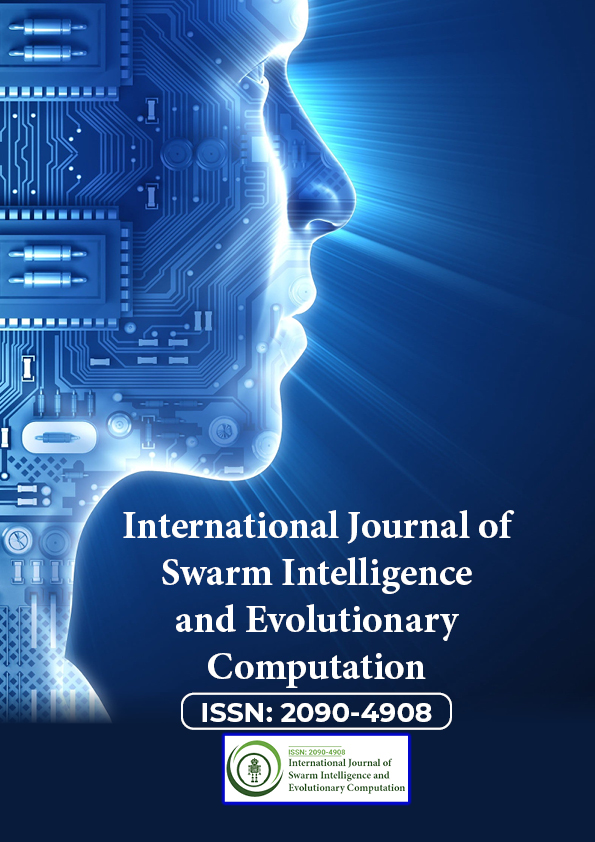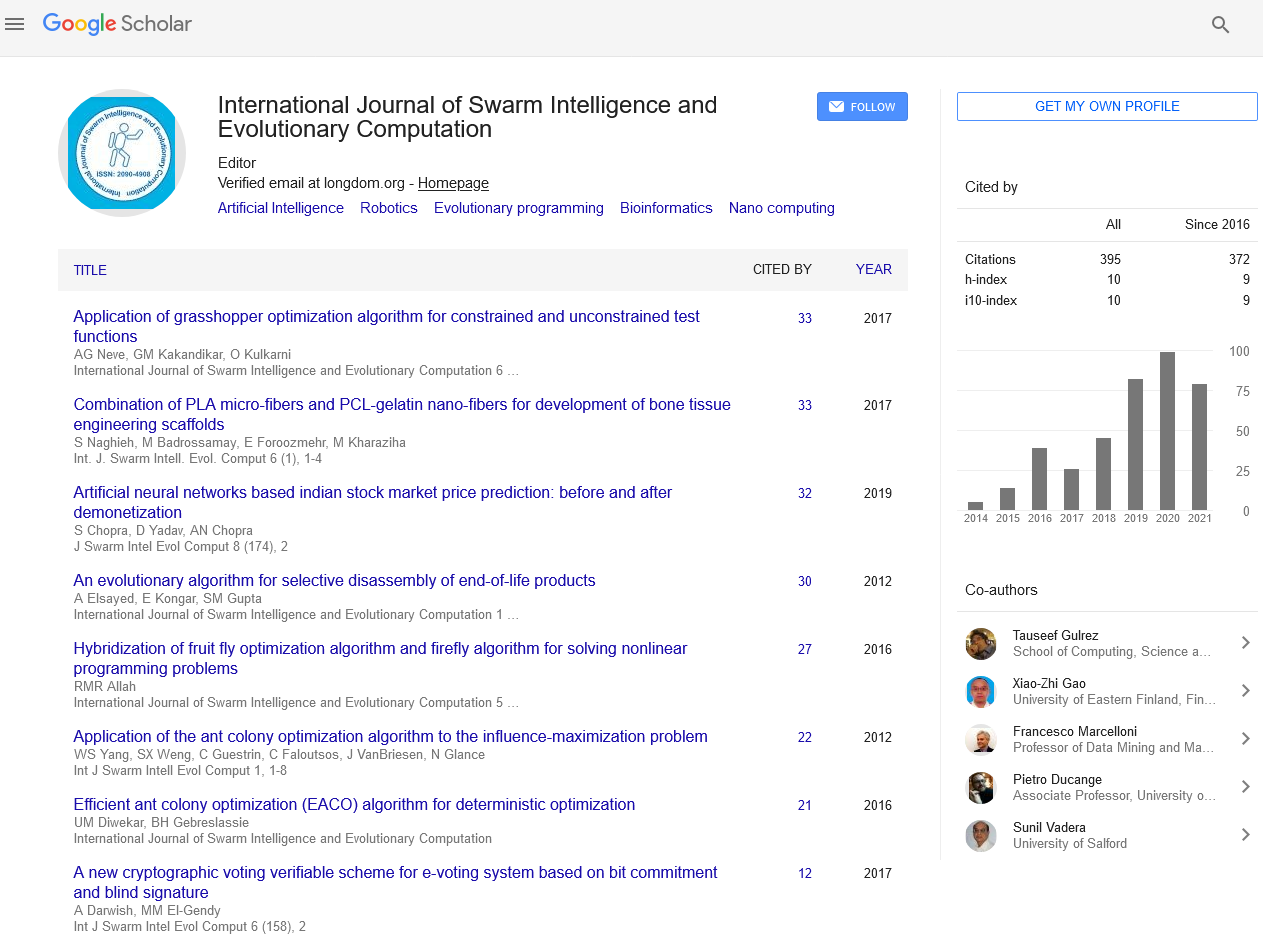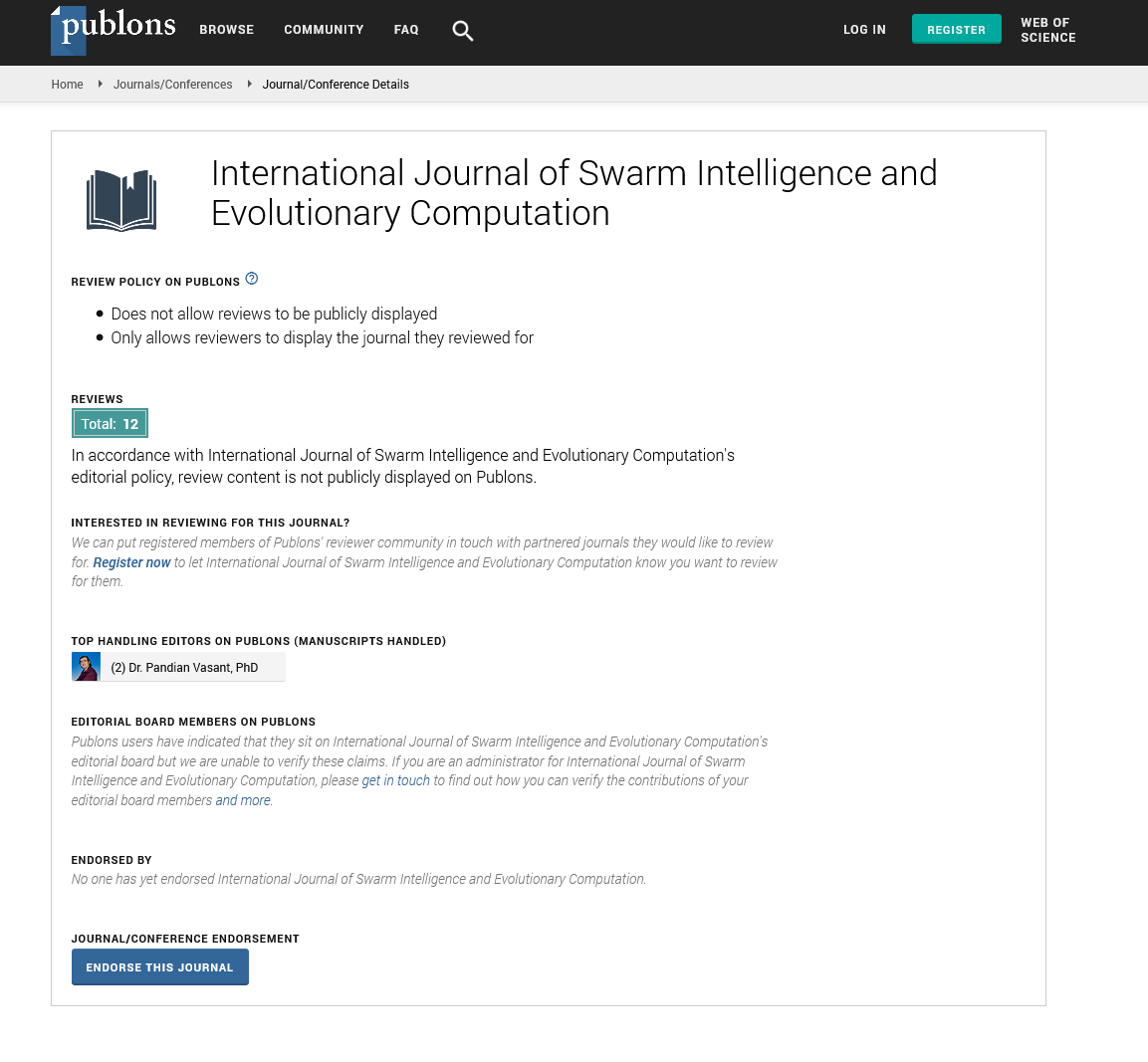Indexed In
- Genamics JournalSeek
- RefSeek
- Hamdard University
- EBSCO A-Z
- OCLC- WorldCat
- Publons
- Euro Pub
- Google Scholar
Useful Links
Share This Page
Journal Flyer

Open Access Journals
- Agri and Aquaculture
- Biochemistry
- Bioinformatics & Systems Biology
- Business & Management
- Chemistry
- Clinical Sciences
- Engineering
- Food & Nutrition
- General Science
- Genetics & Molecular Biology
- Immunology & Microbiology
- Medical Sciences
- Neuroscience & Psychology
- Nursing & Health Care
- Pharmaceutical Sciences
Opinion Article - (2025) Volume 14, Issue 1
The Deep Roots and Branching Futures of Swarm Intelligence and Artificial Intelligence: An Exploration of Emergent Complexity
Emrah Badril Azha*Received: 12-Feb-2025, Manuscript No. SIEC-25-28693 ; Editor assigned: 14-Feb-2025, Pre QC No. SIEC-25-28693 (PQ); Reviewed: 28-Feb-2025, QC No. SIEC-25-28693 ; Revised: 07-Mar-2025, Manuscript No. SIEC-25-28693 (R); Published: 14-Mar-2025, DOI: 10.35248/2090-4908.24.14.413
Description
Swarm Intelligence (SI), at its core, is a paradigm that seeks to understand and emulate the collective intelligence that arises from the interactions of simple, autonomous agents. Inspired by the fascinating coordination observed in natural systems like ant colonies foraging for food, bee swarms optimizing hive locations, and fish schools navigating complex aquatic environments, SI focuses on the principles of decentralization, self-organization, and emergent behavior. Individual agents within an SI system typically possess limited capabilities and local knowledge, interacting with their immediate neighbors based on simple rules. However, through these local interactions, a global, intelligent behavior emerges that is far more sophisticated than the capabilities of any single agent. Key characteristics of SI include positive feedback mechanisms that amplify successful behaviors, negative feedback that helps stabilize the system and prevent premature convergence, and the absence of centralized control. Algorithms like Ant Colony Optimization (ACO), which mimics the pheromone-laying behavior of ants to find optimal paths, and Particle Swarm Optimization (PSO), which simulates the social behavior of birds flocking or fish schooling to search for optimal solutions in a continuous space, are prime examples of SI in action. These algorithms have proven remarkably effective in tackling complex optimization problems across diverse domains, including routing, scheduling, resource allocation, and machine learning feature selection.
Artificial Intelligence (AI), in its broadest definition, is the endeavor to create intelligent machines that can perform tasks that typically require human intelligence. This encompasses a vast spectrum of approaches, from symbolic reasoning and knowledge-based systems to machine learning and deep learning. Traditionally, AI often relied on explicitly programmed rules and centralized control mechanisms. However, the inherent limitations of these approaches in dealing with complex, dynamic, and uncertain real-world scenarios have led researchers to explore alternative paradigms. The decentralized and emergent nature of Swarm Intelligence offers a compelling and complementary perspective. By integrating SI principles into AI systems, we can potentially develop more robust, adaptable, and scalable solutions that can thrive in environments where traditional centralized AI might falter. The emergent behaviors that arise from the collective interactions of simple SI-inspired agents can lead to the discovery of novel and efficient solutions that might be difficult or even impossible to engineer through purely top-down, rule-based AI design. Consider a multi-robot system tasked with exploring an unknown environment. If each robot operates independently with a pre-programmed set of instructions, the system might be inefficient and prone to redundancy. However, if these robots operate based on SI principles, such as sharing information about discovered areas and avoiding previously explored regions through local communication, the collective exploration becomes far more efficient and adaptive.
In conclusion, the relationship between SI and AI is one of symbiotic potential. SI provides a powerful framework for achieving complex global behavior through simple local interactions, offering a departure from traditional centralized AI approaches. The emergent intelligence inherent in SI systems can enhance the adaptability, robustness, and scalability of AI solutions, particularly in dynamic and uncertain environments. By understanding and harnessing the principles of swarm intelligence, we can unlock new avenues for developing artificial intelligence that is not only intelligent but also resilient and capable of tackling real-world challenges with unprecedented effectiveness. The future likely holds a deeper integration of these two fields, leading to the creation of truly intelligent systems that learn, adapt, and solve problems in ways inspired by the collective wisdom of natural swarms.
Citation: Azha EB (2025). The Deep Roots and Branching Futures of Swarm Intelligence and Artificial Intelligence: An Exploration of Emergent Complexity. Int J Swarm Evol Comput. 14:413.
Copyright: © 2025 Azha EB. This is an open-access article distributed under the terms of the Creative Commons Attribution License, which permits unrestricted use, distribution and reproduction in any medium, provided the original author and source are credited.


